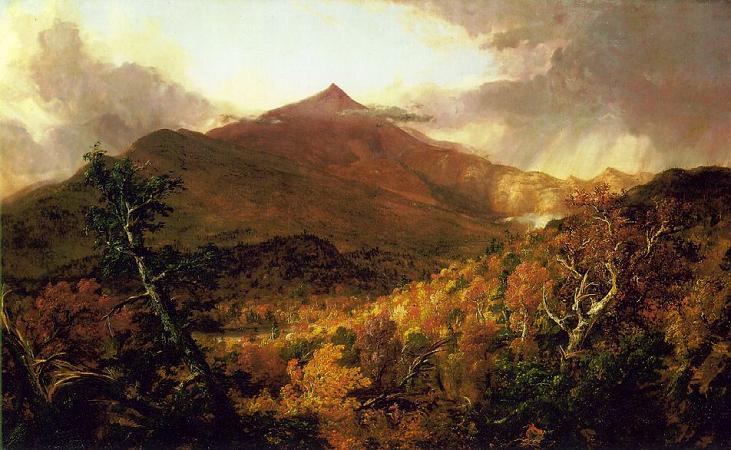Adirondack Mountains. The Adirondack Mountains form a massif in northeastern New York, United States. Its boundaries correspond to the boundaries of Adirondack Park. The mountains form a roughly circular dome, about 160 miles in diameter and about 1 mile high. The current relief owes much to glaciation. The word Adirondack is thought to come from a Mohawk word meaning eaters of trees. The earliest written use of the name, spelled Rontaks, was in 1729 by the French missionary Joseph-François Lafitau. He explained that the word was used by the Iroquoians as a derogatory term for groups of Algonquians who did not practice agriculture and therefore sometimes had to eat tree bark to survive harsh winters. As the Mohawks had no written language at the time, Europeans used various phonetic spellings of the word, including Achkokx, Rondaxe, and Adirondax. Such words were strongly associated with the region, but they were not yet considered a place name--an English map from 1761 labels the area simply Deer Hunting Country. In 1837, the mountains were named Adirondacks by Ebenezer Emmons. Humans have lived in the region of the Adirondack Mountains since the Paleo-Indian period, shortly after the last ice age. The first group to move into the area came south from the St. Lawrence River Valley and settled along the shores of the Champlain Sea around 13,000 BC. These people, known as the Laurentian culture, were semi-nomadic hunter-gatherers. Evidence for their presence in the Adirondacks includes an arrowhead of red-brown chert found in 2007 at the edge of Tupper Lake. Over the next 11,000 or so years, the region's climate slowly warmed, and forests began to replace the original tundra. Several different cultures--known as the Sylvan Lake, River, Middlesex, Point Peninsula, and Owasco cultures--replaced the Laurentian culture over time. By the time of the Owasco culture, around 0 AD, maize and beans were being cultivated in the Adirondack uplands. The first Iroquoian peoples--the Mohawk and the Oneida--arrived in the Adirondack region between 4,000 and 1,200 years ago. Both groups claimed the Adirondack Mountains as hunting grounds. According to Haudenosaunee historian Rick Hill, the region was considered a Dish with One Spoon, symbolizing shared hunting resources between the groups. A group of Algonquian people, known as the Mahicans, also occupied the region, particularly the Hudson River Valley. These were the groups that the first European explorers of the area encountered. European colonization of the area began with a battle between Samuel de Champlain and a group of Mohawks, in what is now Ticonderoga in 1609. The Jesuit missionary Isaac Jogues became the first recorded European to travel through the center of the Adirondacks--as the captive of a Mohawk hunting party--in 1642. The early European perception of the Adirondacks was of a vast, inhospitable wilderness. One map of the area from 1771 shows the region as a blank space in the northeastern corner of New York. In 1784, Thomas Pownhall wrote that the American Indians referred to the area as the Dismal Wilderness, or the Habitation of Winter, and that the area was either not much known to them, or, if known, very wisely by them kept from the Knowledge of the Europeans. He clearly had the impression that Indians did not live within the Adirondack mountains. Because local Iroquoian and Algonquian tribes had been decimated first by smallpox and measles in the 1600s, then by wars with encroaching European settlers, there likely were very few people living in the region by the time Pownhall wrote his description. It is only relatively recently that numerous archaeological finds have definitively shown that American Indians were very present in the Adirondacks before European contact, hunting, making pottery, and raising maize and beans. The European impression of a wild region devoid of human connection set up a narrative about wilderness that would persist through the next 200-some years of the region's history. While society's perception of the Adirondacks' value changed, they were always seen as a land of natural resources and physical beauty, not of human history. First the area was an inhospitable tangle, then a lucrative store of lumber. After the American Revolutionary War, New York State gained ownership of most of the land in the region.
more...









